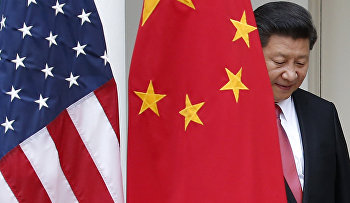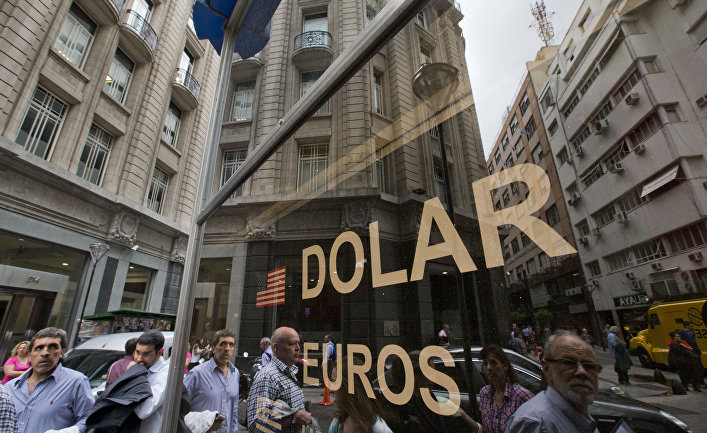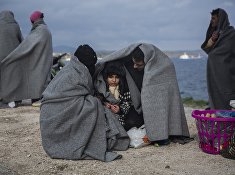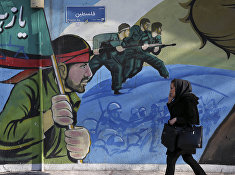Economic warfare was known during the Cold War era as “the rivalry between two systems.” This war didn't end with the implosion of the USSR, but instead assumed a more visible form. The USA is waging this war today, aided by its “strategic partners” NATO and the EU, and its intended end-game is glaringly clear – to establish a New World Order on earth, based on the US dollar, and laws and rules laid down uniquely by Washington, and not by New York (the UN) or by Brussels (NATO). A stark example of the war agenda was published this year, as the USA's Strategy for National Security. This document recognizes that for the USA to retain its global leadership it must keep its hold on pricing policies. It even states that the policy is supported in Russia and Europe – but that Russia is to blame for it.
No surprises there, then. The US makes no attempt to claim that as the world's leading superpower it is liable to the same rules as the rest of humanity. They even hobble their own allies, by hamstringing their economies to prevent them performing at a level where they would challenge the USA's. If we take a look, we see that the economic meltdown of 2008, which broke out in the US over the junkbonds scandal, continues to hamper the European Union. Washington also lit the fuse for the political conflagration in the Middle East and North Africa – and the EU is paying the price in the massive costs of hosting millions of refugees, in terror attacks, and in the political fallout. The US-sponsored neo-Nazi coup in Ukraine is another similar operation – intended to stamp out even the slightest nascent collaboration between the EU and Russia, and to freeze out China's route to Europe via Russia.
WikiLeaks: The US strategy to create a new global legal and economic system: TPP, TTIP, TISA https://t.co/RPFg2Ku5Zq pic.twitter.com/30AboMDorW
— Anonymous (@GroupAnon) January 10, 2016
The latest whammy aimed at the EU — dreamed up by the US and the UK (which is threatening a Brexit)- is the Transatlantic Trade and Investment Partnership, or TTIP. This has gone ahead despite that research commissioned in January 2015 by the European Commission itself, polling 150,000 citizens across the EU, found that 97% of those questioned were against the TTIP. Further to the poll, the largest petition ever organized in the EU gathered three million signatures against the TTIP. There's nothing surprising in this – the entire globe has been bound to the dollar, and the lifting of customs barriers (duties and tariffs) will permit the US to carry out dumping with impunity – simply printing extra shipments of dollars to help offload surplus American goods on foreign markets.
Carrying out the objectives mentioned above requires the conclusion of a parallel agreement to the TTIP on the Asian market – the Trans-Pacific Trade Partnership (TPP), the twin sister of the TTIP. This comes with a caveat that its implementation over the upcoming years is doubtful. It almost seems that the terms of 'partnership' aren't sufficiently partner-like to enable the world leader to get buy-in for the TPP across Asia? Nobel prize-winner Josef Stieglitz has dealt with this issue, calling the world's widest-ranging agreement on trade and investment “a farce.” “We hear a lot about about the important of the TPP for 'free trade.' Yet in reality it's an agreement to place trade and investment activities between its country signatories under strict controls. It's all done on behalf of the most powerful business lobbies in each country concerned. Make no mistake – if we look at the complex issues that are prompting most of the arguments, it becomes clear – TPP has nothing to do with 'free' trade whatsoever.”
If NAFTA was the Death Star, then the TPP is the Star Killer: https://t.co/7nkLQxD61z
— Rep. Alan Grayson (@AlanGrayson) January 10, 2016
What this means is that the TPP is a new theatre of economic warfare which our American “partners” are now waging. The TPP currently involves twelve countries: Australia, Brunei, Vietnam, Canada, Malaysia, Mexico, New Zealand, Peru, Singapore, the US, Chile, and Japan. Despite its focus on the Asia — Pacific region, the TPP doesn't include the region's biggest economic “tiger” – the People's Republic of China (PRC). Quite the opposite – China instead plans rolling out its own “partnership” with the same signatory countries – the Regional Comprehensive Economic Partnership (RCEP), to include both Japan and Australia. Nor is Russia included in the TPP, since it was purposely excluded for obvious reasons, just like the PRC. Russian president Vladimir Putin did not mince his words on this issue: “A group of countries has gone about forming a closed and exclusive economic cabal, whose formation is negotiated behind the scenes, in secretive deals from which even their own citizens and business leaders are excluded, to say nothing of the exclusion of other countries.”
How can Russia respond to the challenges of an ongoing economic war against it – in which the sanctions slapped against it for the accession of Crimea are barely the main issue? The answer is very obvious – by boosting economic relations with China. Prominent Russian politician Sergey Naryshkin, the Chairman of the State Duma, recently spoke at the Eurasian Economics Prospects forum, saying: “The Eurasian Economic Union's collaboration with the People's Republic of China will bring new perspectives, with the real possibility of a Europe-wide area stretching from Lisbon to Vladivostok.”

The Eurasian Economic Union, the Chinese “New Silk Road,” and the RCEP already mentioned will cross-fertilize with each other as a viable alternative to the American project. It will greatly help Russia, and other nations who are opposed to the character, methodology and measures of the US, EU and even Ukrainian sanctions. In two to three years Russia will have moved over to an entirely self-sufficient economy, in which its strategic needs in defense, food production, and industry are met entirely by domestic output. Of course, no kind of isolationism is being planned – Russia's active involvement in numerous alliances pulls the rug from under that canard. However, given the ongoing economic war being waged against Russia, Russia's stability can only be safeguarded by ensuring a fully self-sufficient economy, capable of long-term (possibly over decades) operation and development, even to withstand a conventional war, or protracted border disputes.
Russia's territorial expanse, population-base and natural resources enable it to support this economic model. This is precisely why such great efforts are being made today to prevent it – because in a few years, it will be utterly impossible to conduct any kind of economic war against Russia. And the USA is very well aware of this. This is what prompted the ham-fisted coup in Ukraine in 2014, and what is behind the current sanctions, and the slashing of international oil prices.
It is only Russia – unlike many of the nation-states which have been de facto annihilated by the US – which has been able to provide itself with the necessary resources for mobilization. Its gold-reserve assets have been established in timely order; its industries, which had crumbled after the implosion of the USSR and the “Roaring Nineties” are being revitalized; and the morale of the populace remains undaunted. “The people and the party are united” — the vast majority of people support government policies, and are ready to tighten their belts a little – but they are not ready to be dictated to by Ukraine, or by the West.
It all means that there is no practical chance for Russia's foes to win any kind of victory in this war. And no theoretical chance either.






